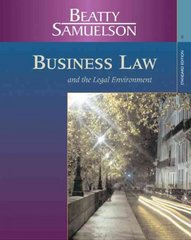Question
This is a whole problem Im working on. Then, I could get only answers for the first problem. Could you help me out to figure
This is a whole problem Im working on. Then, I could get only answers for the first problem. Could you help me out to figure out how to get started on each problem as the first step? I really appreciate your help.
When disucssing the business cycles, we stated that investment demand is the most volatile part of expenditure. In this exercise, you are going to work through an example that helps explaining why investment might be so volatile.
Consider a representative rm in a two-period model with production. Suppose that the rm has a Cobb-Douglas production function, with Y = zKN1, and the marginal product of capital is equal to MPK = zK1N1. To make your life easy, suppose that the labor supply is completely inelastic, so in this economy N = 1 in both periods.
a. Derive the optimal level of capital in Period 2 for this rm as a function of parameters and prices (, z, r, and d) using the optimal investment rule from Slide 12 in Chapter 11. To simplify matters, remember to use the fact that N = 1.
b. Derive the optimal capital-output ( K Y ) ratio in Period 2 (so really, K0 Y 0 ) in this economy as a function of parameters.
c. In the remaining part of this problem, assume the following values of parameters: = 0.3, z = 10, r = 0.02, and d = 0.08 (These are very standard values used in the business cycle literature for data with annual frequency). For these parameter values, what is the optimal capital-output ratio you derived in part b) equal to? This is actually a very standard value in the literature, and should give you a good idea how large the productive capital stock (value of all the machines, factories, production lines, and others) in the economy is relative to annual output (GDP).
d. (For the last two parts, the numbers are not going to be very round) Suppose now that the economy starts with K = 125 units of capital. What is the value of output in the rst period? Suppose that in the second period, the value of z 0 is going to remain at the same level as in Period 1, so z 0 = 10. Given the values of parameters and prices above, how much capital will the rm want to have in Period 2? Given the value of depreciation parameter d, what will be the investment demand of this rm?
e. Now, suppose that instead of the value of productivity parameter z 0 remaining unchanged in Period 2, the rm expects it to be 2% larger and equal to z 0 = 10.2 - admittedly, a small change. What will be the new optimal level of capital the rm is going to choose in period 2? To get to that level, how much will the rm have to invest in Period 1? Compare the percentage changes in the desired levels of capital and in investment demand between points d) and e). What can you tell about changes in the size of in
Step by Step Solution
There are 3 Steps involved in it
Step: 1

Get Instant Access to Expert-Tailored Solutions
See step-by-step solutions with expert insights and AI powered tools for academic success
Step: 2

Step: 3

Ace Your Homework with AI
Get the answers you need in no time with our AI-driven, step-by-step assistance
Get Started


